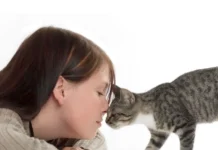A Day in the Life of a Cat Behavior Consultant: Insights from Daniel “DQ” Quagliozzi
In the ever-evolving world of pet care, understanding animal behavior is crucial. Last month, we explored a day in the life of Clare Hemington, a cat behaviorist in London. Today, we shift our focus to San Francisco, where we meet Daniel “DQ” Quagliozzi, the expert behind Go, Cat, Go!, an invaluable in-home resource for cat behavior advice.
Meet Daniel DQ Quagliozzi
With over a decade of specialized experience at the San Francisco SPCA, DQ is regarded as a leading authority on cat behavior in the Bay Area. His compassionate approach combined with practical, action-oriented solutions makes him the go-to consultant for cat owners facing challenges. Known as the “Man with the Action Plan,” he offers a holistic understanding of feline needs and behaviors.

Are you curious about DQ’s perspective regarding cat ownership? Here’s a glimpse of his philosophy:
“Is your resident feline making you frantic? Solving your crisis is my mission. I can restore peace of mind to your home and help you rebuild your friendship with your feline friends. When your kitty is thinking outside the box, it’s time to call Go, Cat, Go!”
The Catlandia Charter: Five Rules for Living in Harmony with Cats
DQ introduces us to his “Catlandia Charter,” a set of five rules designed to enhance the human-cat relationship. As he aptly puts it, “Humans and cats have been trying to peacefully coexist for centuries, and for the most part, we are doing okay … with a little room for improvement.”
1. Cats Don’t Understand “Property”
Cats do not recognize boundaries as humans do. Their perception merges your belongings with their territory, leading to behaviors that can test patience. DQ advises that understanding this instinct is key in creating a peaceful cohabitation.
2. Cats Are Disobedient
In the realm of authority, cats operate independently. Unlike dogs, they are not as eager to please. Instead, they prefer to follow their instincts and can be trained when approached with patience and understanding.
3. Cats Can Be Selfish
Cats often pursue personal gains in their interactions with humans. While they appreciate the comforts we provide, they can also exhibit self-serving behavior, particularly in multi-cat environments.
4. Cats Need Choices
Individual cats have distinct preferences regarding how and when they want interaction. Monitoring their cues and allowing them to express their desires fosters a more harmonious relationship and can reduce stress.
5. Cats Are Never Wrong
A cat’s actions are inherently justified from their perspective. This means that reprimanding them may not yield the desired behavioral changes. Instead, refining your understanding of their needs can help correct issues effectively.

Conclusion: Co-Existing Harmoniously with Feline Friends
By implementing these five rules, cat owners can pave the way for improved relationships with their feline companions. DQ’s insightful approach offers a refreshing perspective on navigating the complexities of cat behavior, ensuring a balanced and enjoyable coexistence.
For further insights from Daniel Quagliozzi, stay tuned for a follow-up interview where we dive deeper into his methods and philosophies! Until then, remember: embrace the quirks of cat ownership—it’s all part of the fun!
For additional resources and insights, visit The Purrington Post.












